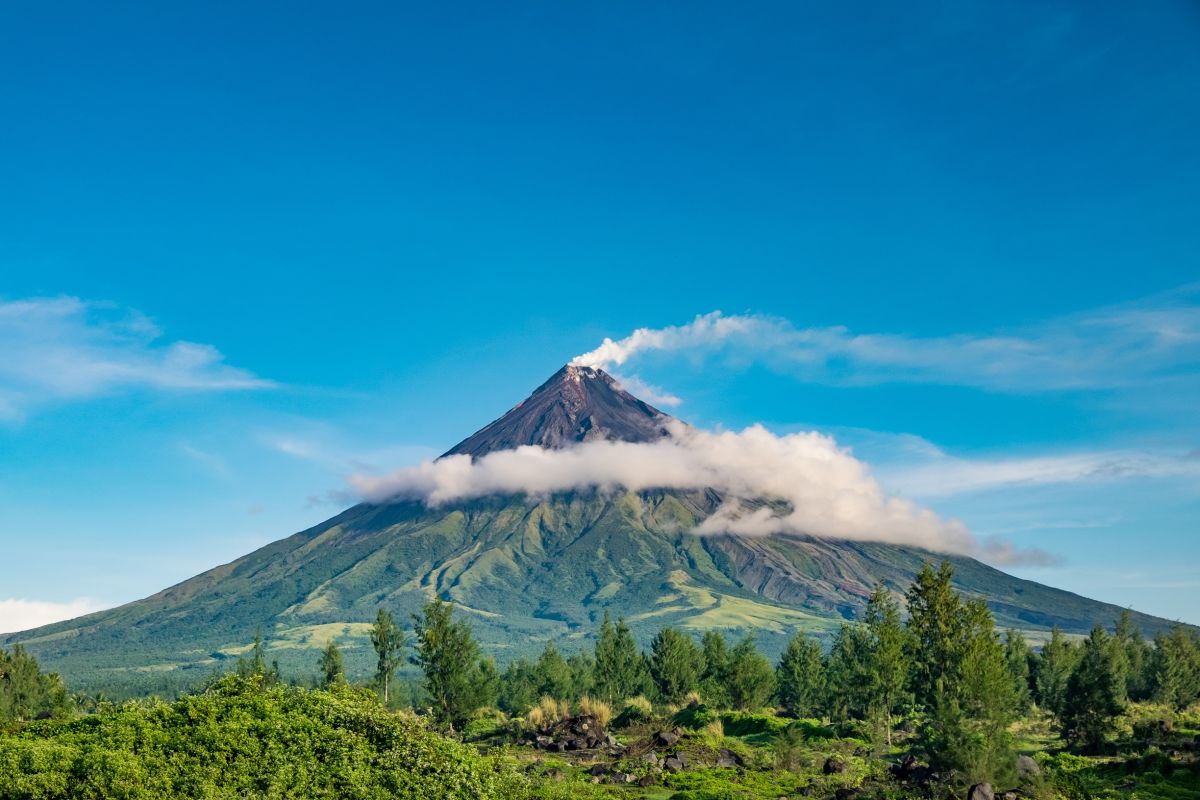If you’re on a hike and your guide points out a nearby active volcano, pay attention to its crater. Maybe you’ll see oozing lava—an incredible sight, from a safe distance. You might also spot something more ethereal: a smoke ring rising into the sky.
Known as volcanic vortex rings, these floating hoops are actually made of water vapor, carbon dioxide, and sulfur dioxide—not smoke. Though usually white, they can be brown when volcanic ash mixes in.
Since you can’t safely hike all the way to the crater’s edge, you might ask your guide how volcanic vortex rings form. They’ll tell you that water vapor bubbles up through magma deep in the crater’s vent. These bubbles can be huge—even several meters wide!—and when a big one pops, its ball of gaseous water vapor violently shoots up. If the vent is properly cylindrical—essentially, shaped like a pipe—that super-heated gas drags on the vent walls and curls in on itself. The gas in the ball’s center gets pulled from the middle and toward its edges, turning that ball of vapor into a ring rolling its way upward.
Your guide points to the crater’s rim. They explain that that vapor ring can now pop out of the vent’s top; if the vent’s walls are of even height, like a paper-towel tube, the ring will maintain its shape. Upon hitting the cold air of the atmosphere, the hot water vapor cools, condenses, and slows down. That cool, condensed vapor is the ring you see.
Only if these precise conditions are met will a volcanic vortex ring form. Should you see one, consider it a successful hike!










